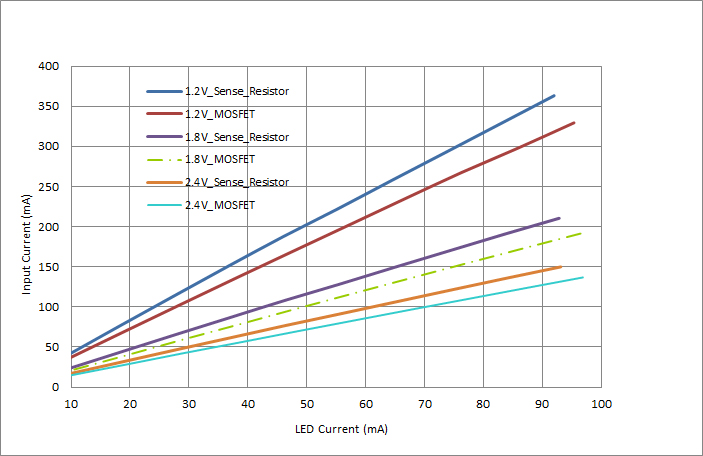In a recent blog entry for Texas Instruments by Chris Glaser:
When driving a single LED from a battery, efficiency is key. Efficiently making use of the battery’s energy and efficiently converting it to light output prolongs battery life, which reduces cost and hassle for the end user. While high efficiency switching power conversion is the first step in this process, dimming is a second step just as important as the first. Dimming allows the user to reduce the light output, and thus the battery power consumed, when they don’t need such a bright light. This combination of dimming and high efficiency power conversion gives such items as smartphones and glucose meters a sufficiently long battery life.
 |
Comparison of LED current regulation through a) a sense resistor and b) a MOSFET in the power stage. (photo courtesy: TI)
|
A further step to make these devices even more efficient at driving an LED is to improve the efficiency of the switching power stage itself. An important loss term in every LED driver is the loss in the current sensing element—typically a sense resistor. Being a resistor, all current going through it is a loss and a drain on the battery. In order to achieve a tight control over the LED current (which is proportional to the light output), a resistor is usually used as the sensing element. The LED’s current is routed through this resistor and the voltage developed is measured and regulated by the LED driver. While simple, this is unfortunately a relatively large loss for a single LED driver.
In most switching power supplies, there is a MOSFET in the power stage that can be used to sense the LED current instead of a resistor. This method requires more processing of the current signal, but when integrated inside the LED driver IC, this complexity is removed from the user. Very simply, higher efficiency results. And the larger and possibly costly sense resistor is no longer needed in the design! As an example, I've included a comparison above of the input current drawn by the TPS61260 LED driver when using either a sense resistor or MOSFET to sense the LED current.












